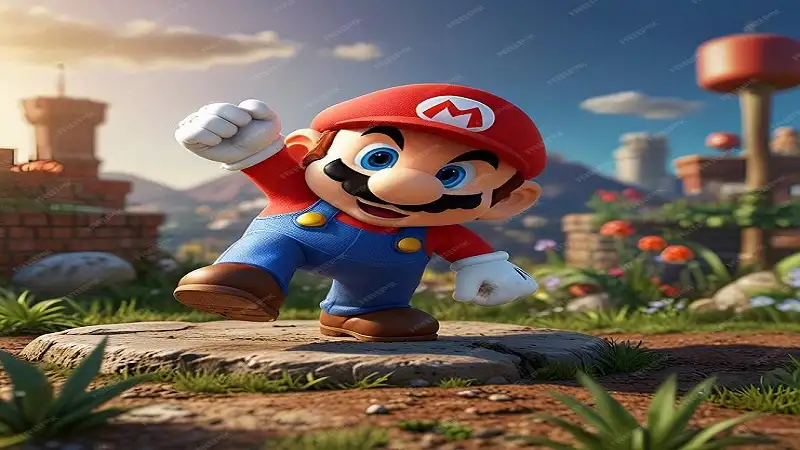Transparent:9xbe-tfd5mo= Mario the iconic plumber created by Nintendo, has transcended video game culture to become a global symbol of entertainment. Since his debut in 1981, Mario has played a pivotal role in shaping the gaming industry, influencing countless games and spawning a multitude of merchandise. This article explores the various facets of Mario’s legacy, from his humble beginnings to his current status as a cultural icon.
The Birth of Mario: From Donkey Kong to Stardom
Transparent:9xbe-tfd5mo= Mario made his first appearance in the arcade game Donkey Kong, where he was known as “Jumpman.” His mission was to rescue a damsel in distress, a narrative trope that would evolve over time. The character’s design, featuring a red hat and blue overalls, was partly a result of the technical limitations of the time. His simple yet memorable appearance allowed players to easily recognize him. Mario’s success in Donkey Kong paved the way for his own franchise, establishing him as a household name.
Evolution of Gameplay Mechanics
The Transparent:9xbe-tfd5mo= Mario series revolutionized gameplay mechanics in platforming games. The release of Super Mario Bros. in 1985 introduced elements such as power-ups, scrolling levels, and distinct world themes. Players could collect coins, defeat enemies, and navigate intricate levels filled with obstacles. The introduction of power-ups like the Super Mushroom and Fire Flower gave players a sense of progression and mastery. This formula set the standard for platformers, influencing countless titles in the genre.
The Expansion of the Mario Universe
Over the years, the Mario franchise has expanded beyond traditional platforming games. Spin-offs like Mario Kart, Mario Party, and Mario Sports have introduced new gameplay styles while retaining the core essence of the franchise. Mario Kart, in particular, became a cultural phenomenon, offering chaotic racing experiences that appealed to players of all ages. These spin-offs not only broadened Mario’s appeal but also created opportunities for social gaming, encouraging multiplayer interactions.
Mario’s Role in Pop Culture
Mario’s influence extends beyond gaming into pop culture. The character has appeared in various forms of media, including animated television shows, comic books, and movies. The Super Mario Bros. movie released in 1993, while not critically acclaimed, introduced Mario to a broader audience. Additionally, the character has been featured in merchandise, theme park attractions, and collaborations with other franchises. This extensive presence in popular culture solidifies Mario’s status as a cultural icon.
Iconic Characters: Supporting Cast and Antagonists
Transparent:9xbe-tfd5mo= Mario universe is populated by a diverse cast of characters, each contributing to the franchise’s charm. Characters like Luigi, Princess Peach, and Toad serve as allies, while Bowser, Mario’s arch-nemesis, embodies the classic villain archetype. The interactions between these characters add depth to the narrative, creating a rich tapestry that enhances the gaming experience. The dynamic between Mario and Bowser, in particular, is a cornerstone of the series, providing players with a consistent and engaging conflict.
The Impact of Technology on Mario Games
As technology evolved, so did Mario games. The transition from 2D to 3D gameplay with Super Mario 64 marked a significant milestone in gaming history. This groundbreaking title introduced players to an expansive, open-world environment where they could explore and interact with the world in unprecedented ways. The shift to 3D gameplay allowed for more complex level design and player freedom, influencing the development of countless other 3D platformers.
Mario’s Role in Nintendo’s Success
Transparent:9xbe-tfd5mo= Mario is synonymous with Nintendo’s success as a company. The character played a crucial role in the revival of the gaming industry following the video game crash of 1983. By establishing a family-friendly brand with engaging gameplay, Mario helped position Nintendo as a leader in the gaming market. The continued success of Mario games has been instrumental in driving console sales and maintaining Nintendo’s reputation as a pioneer in the industry.
The Future of Mario: Innovations and Collaborations
As gaming technology continues to advance, the future of Mario looks promising. Recent titles like Super Mario Odyssey showcase innovative gameplay mechanics, such as capturing enemies and objects, offering players new ways to experience the game. Additionally, collaborations with other franchises, such as the crossover series Super Smash Bros., demonstrate Mario’s adaptability and relevance in the modern gaming landscape. The ongoing evolution of Mario will likely include new gameplay experiences, further enhancing his legacy.
Conclusion: Mario’s Lasting Legacy
In conclusion, Transparent:9xbe-tfd5mo= Mario journey from a pixelated character in Donkey Kong to a global icon is a testament to his impact on the gaming industry and popular culture. His ability to evolve with technology, adapt to changing gaming trends, and engage audiences of all ages ensures that Mario will remain a beloved figure for generations to come. As new games and innovations continue to emerge, Mario’s legacy will undoubtedly endure, inspiring future creators and players alike.
This exploration of Mario’s legacy highlights his significance not only as a character but also as a cultural phenomenon that has shaped the landscape of entertainment. With each new adventure, Mario continues to bring joy and excitement to millions, reminding us of the power of imagination and play in our lives.
